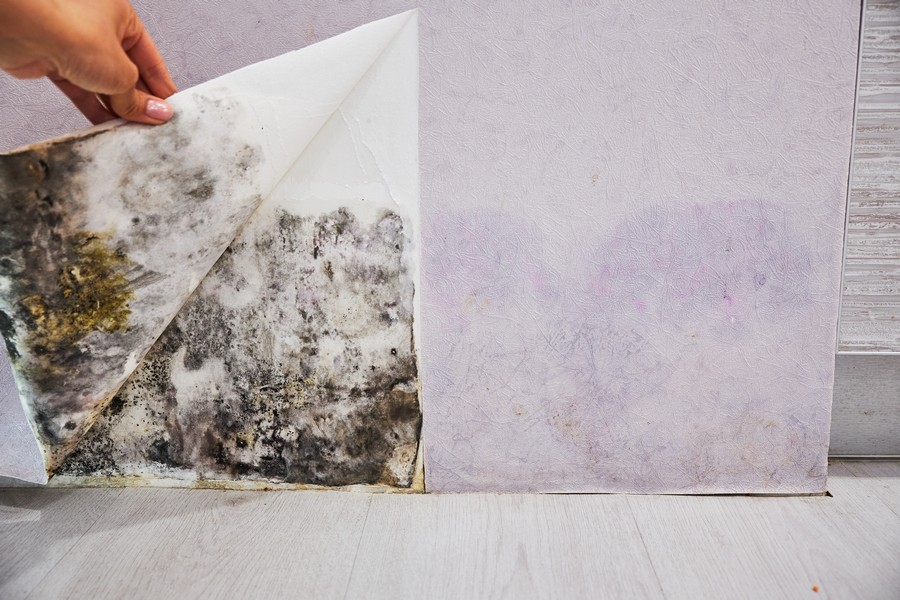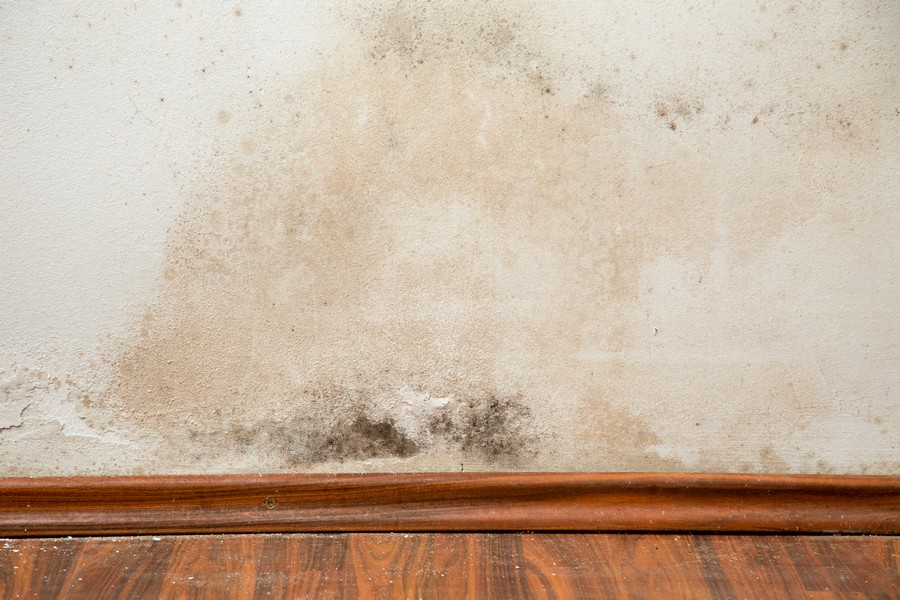Contact Brighton Damp Treatments Now to Speak With an Expert.

Water is drawn up the walls and through tiny holes in brick or stone due to capillary action, generally stopping at a maximum height of 1.2m. However, non-breathable wall coverings like renders, plasters and vinyl wallpaper can cause dampness to appear higher up. This type of damp differs from rain penetration on top of the walls or ceilings as it begins at ground level or beneath it.
The most frequent blunder when it comes to rising damp is mistaking it for condensation effects, whereby water vapour transforms into liquid on contact with cold surfaces. Though the two may seem similar, there are some tell-tale signs that can help distinguish one from the other.
The PCA affirms that sampling masonry, especially mortar, is an effective way to identify rising damp. Examining the state of affairs inside the walls can show whether your home is being affected by increasing moisture.

If samples show proof of water infiltration, this suggests increasing dampness. Conversely, if there is a condensation issue, such evidence will not be present.
A Damp Proof Course (DPC) can be used to treat rising dampness rather than condensation. Applying it inaccurately, however, won’t solve the issue. Inaccurate diagnosis will lead to an ineffective remedy so the best thing to do is contact Brighton Damp Treatments who boast both experienced professionals and a great track record in this field.
Prior to tackling an issue of excessive moisture in a wall, it is essential to determine if the dampness is solely due to rising damp or if other causes such as condensation or rainfall are impacting the situation.
Investigating the likelihood of rising dampness is essential to exclude other water infiltration sources. Importantly, condensation in colder months must be considered so a thorough examination should always be carried out. If further sources of water penetration are identified, they need to be eliminated before an accurate assessment of any rising damp can occur as it can often be tricky distinguishing between multiple causes of water intrusion.
The survey must be thorough to ensure all potential moisture areas are accurately documented. Extra vigilance is essential when deterioration may go unnoticed, e.g., beneath timber suspended flooring. Anywhere wood and humidity exist, the risk of decay should be reported and the client apprised.

It is essential to thoroughly identify all potential moisture indicators during the survey. It can be difficult to identify multiple sources of water ingress. A moisture gradient, usually visible up to 1.5m high but in some cases higher, is a tell-tale sign of active rising dampness; lower down the wall it will be more wet and gradually less so as you go up. ‘Tidemark’ may also appear – a horizontal line along the wall with the area below clearly moistened.
A ‘band’ of hygroscopic salts on the masonry can also evidence damp issues, but cannot differentiate between an active or former occurrence.
It is imperative to specify the type and source of dampness as this will determine the treatments needed and actions taken. For instance, a Damp Proof Course (DPC) may be an option to treat rising damp but not wet rot.
Regular inspections should be conducted to identify any signs of increased humidity on walls. Early action is recommended in order to prevent further damage and disruption for those residing in the building.
Tidal markings up to 1m high on walls are telltale signs of rising damp. Salt in the ground and evaporation cause these marks, which are a common indicator of dampness.
If you can’t spot any tide marks, try looking for wet patches or discolouration on the walls. These are usually brown or yellowish in hue and have a similar appearance to tide marks. Visible above the skirting board, they should be easy to detect.

Inspect the skirting board for any fungi growth or crawling along its side. Pay attention to any chipped or flaked paint as dampness can cause harm to timbers, and also affect other things it comes into contact with. If the damage appears only at the top of the building, then penetrating damp is likely to be a factor.
Salt in the shape of light, white deposits is another sign. When these salts are washed off the brick and onto the plaster, they emerge as blistering spots on your walls.
If you spot black mould on your skirting boards, it’s a sign of moisture in the area. If there is no other evidence of black mould elsewhere in the house and it is confined to an area 1m above the skirting board, this could indicate increasing dampness.
Be mindful if you notice wallpaper lifting away from the skirting board and curling at the corner; it could be a sign of rising damp.
Feel around the area suspected of increasing moisture, running your fingertips over it. You may detect grittiness on your hands and observe small particles settling onto the floor.
Examine inner exposed areas of stone or brickwork. Assess if the brick is damp or if salts are forming in combination with the paint. Be aware that rising moisture will only appear on the first floor level since humidity from the earth is pushed up the wall, leading to this issue.
It is important to be aware of the various types of damp. Our website offers comprehensive information on this subject. This evidence indicates that a damp survey must be conducted in order to determine the source and extent of damage before it worsens and affects the structure more significantly.
At no extra cost, we offer you a non-binding site damp survey. We have experienced personnel who will inspect your property and provide an expert report on any issues connected to rising damp. Our surveys are available across the UK, 7 days a week with no obligation attached.
We provide free of charge, non-obligatory site damp surveys all over the UK seven days a week. Our knowledgeable staff can assess your dwelling and create an informed report concerning any problems associated with rising dampness. No commitment is necessary on your part! Get in touch with Brighton Damp Treatments now to consult an expert. For further information, please call 01273 257765.
Contact Brighton Damp Treatments Now to Speak With an Expert.
Brighton Damp Treatments offer specialised surveys to help reduce rising damp resulting from a missing or damaged damp-proof membrane, bridging, failure or lack of physical protection. Our assessments and remedies for wet concrete floors and increasing moisture levels will assist in removing dampness from a property.
A surveyor who is fully certified and trained will: assess the condition of a property; estimate its value accurately; identify any legal issues that may be present; measure up for calculations related to boundary disputes or other matters of law.
Should further measures be necessary to secure the property, we shall give you due notice.
Get in touch with Brighton Damp Treatments now. They are equipped to assist you promptly and competently. Get your damp problem solved without delay! Ring the Brighton Damp Treatments team now for a quote, consultation and advice. Phone 01273 920588.
Get in touch with us for any questions or queries. Reach out to us if you have any questions or concerns. We are here to help.
Call Our Brighton Damp Experts team now for a free quote, consultation and advice.
A surface electrical moisture meter can be a great help in detecting the presence of dampness, however it cannot provide absolute certainty, particularly if repair work has already been done.
It is essential to conduct quantitative moisture measurements for an accurate assessment of potential rising dampness, and precise diagnosis requires specific procedures. This involves taking a vertical sequence of drilled samples, measuring the hygroscopic and capillary moisture content in each sample. The presence and distribution of capillary moisture content will indicate if there is indeed rising dampness, as well as detect any other issues caused by salt contamination rather than water penetration.
Yes, definitely. Rising humidity can have serious health implications for all those living inside the home. People with existing respiratory problems or pre-existing conditions are especially vulnerable to these issues.
The cost of the examination can vary depending on speed of detection of rising damp, and size of structure. A damp and timber survey is available which helps to save money in the longterm by preventing property damage.
Our professionals will precisely assess and gauge the intensity of your rising damp issue. We will suggest suitable damp treatments as well as the most efficient methods to tackle your condition. Our specialists are qualified beyond Property Care Association (PCA) requirements. Plus, our surveyors have Certified Surveyor in Remedial Treatment (CSRT) accreditation – enabling us to give you first-rate service and attention.
Book a rising dampness survey or contact us and we can link you up with a local team. We have numerous damp experts ready to arrange an appointment for your residence at the earliest time suitable for you.


Max and his team have been at our property all week and I really can’t thank them enough for the fantastic job they’ve done on plastering both our walls and ceilings. They have literally transformed the appearance of our house! Not only has Ma…
From start to finish Max has been incredable. His knowledge lin damp proofing is second to none and his team where very clean and polite. The plastered finish was like glass so happy we choose Max Plastering for job.
Lovely bunch of lads left a very neat and clean job. Problem was solved.
Perfect Finnish and all left clean and tidy and no mess. Used Max previously and would not hesitate to ask him carry out more work.
Max, Harvey and Stuart arrived promptly as arranged. Done a great job on our outside rear wall. Work completed to a high standard, removal of all old material and cleaned up after themselves. I am so pleased with the standard of their work they ar…
They turned up on time and carried out the works in a very professional manor leaving the front of the house clean and tidy. Very impressed would definitely recommend.
I have to say that on every level Max (with Stuart and Harvey) did an extremely professional job! They explained what they were going to do, they were polite and courteous and respected that they were coming into our home. The plastering is of the…
I called max and he managed to come around the same day to do a survey. The next day I received an extremely detailed survey compared to any other damp proofer which made me feel very at ease that he was going to do the right job. Max and team tur…
Contact Brighton Damp Treatments Now to Speak With an Expert.